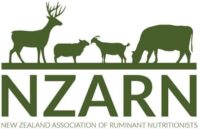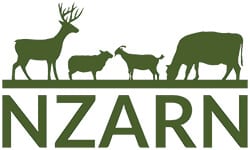Dawn Dalley, DairyNZ Senior Scientist New Systems and Competitiveness Team
Forages for Reduced Nitrate Leaching (FRNL) findings:
- Fodder Beet (FB) has a low crude protein (CP) content.
- Less nitrogen (N) intake and lower urine N in lactating and no lactating dairy cows.
- Pacheco studies
- Rumen changes from feeding FB: decrease in acetate, increase in propionate and butyrate, decrease in rumen ammonia
- On a 25% FB diet there was some sub-clinical acidosis, increases in Fat Evaluation Index (FEI), increase milk solids
- On a 40% FB diet milk solids were lower than 25% maize silage, some sub-clinical acidosis,
- Drop in Milk Urea Nitrogen at 45% FB, also due to lower DMI.
Southern Dairy Hub findings:
- Kale and FB trial set up to look at standard and low environmental impacts
- Results pending
AgResearch findings:
- High N leaching in kale vs FB
Sustainable Farming Fund (SFF) findings:
- There is conflicting information on the proportion of supplement during transition
- Farmer survey results indicated higher incidence of metabolic issues and mastitis, especially after winter feeding for three to five years.
- Nutrition modelling
- Non-lactating cows indicate a maximum of 60% FB inclusion and the need to balance calcium (Ca) and phosphorus (P). Pasture and cereal silages are suitable but additional protein may be required.
- Growing cattle indicate a maximum of 60% FB with the inclusion of pasture silage with adequate protein and supplemental calcium and phosphorus when FB inclusion is greater than 40%
- Early and late lactation a maximum of 30% FB in diet with supplementation of Ca, P and Mg in early lactation.
- FB Cultivar database reports a huge range in CP and P variation.
- P supplementation required
- Calf trial:
- High FB diets during late pregnancy may have negative impacts on the unborn calf:
- Higher proportion of cows with poorer quality colostrum following kale wintering.
- Higher AST (liver enzyme) in calves
- Calves out of dams fed FB were 10% lighter at birth and as R1’s
- Copper supplementation for R1’s reduce fractures
- High FB diets during late pregnancy may have negative impacts on the unborn calf:
NZARN members a full copy of the presentation is available below if you are logged in.
This content has been restricted to logged in users only. Please login to view this content.
Non-members looking for more information are encouraged to use our ‘contact a nutritionist’ form and ‘member directory’ to find a member who can help them answer their questions.
If you are a Rural Professional interested in joining the NZARN please see our ‘membership’ section.

